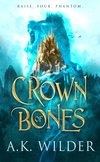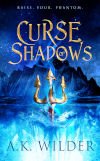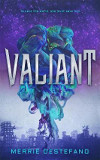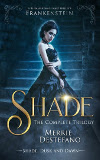On
1 March, I asked the question, "What Makes A Hero?" and looked at "the
Call", the first of what I then thought would be only three C's that
inform my thinking on the subject.
 |
Katniss: the Call
|
Yet
three, however magical a number in myth, fairytale, and Fantasy fiction, is
clearly insufficient to the topic of heroism—leading to last month’s post on Courage.
All
the posts—Call, Circumstance,
Commitment,
and Courage—overlap
each other when it comes to the making of heroes, whether willing or reluctant.
Nonetheless, this month’s theme, which is Challenge, stems directly from last
month’s post, where I wrote:
“…in
order to be a hero, it's not enough to just turn up for the regular
nine-to-five of fantasy adventure, or even to go above and beyond the norms of
everyday duty. The action or deed required of the protagonist has to really
matter, and the risk in terms of following through has to be considerable, if
not extreme.”
 |
Samwise Gamgee: extreme circumstances
|
Examples
cited included:
“Often, in Fantasy tales, the
protagonist must risk their life for others and/or to complete the heroic
quest. Yet high risk consequences may also comprise unjust imprisonment, loss
of standing and/or livelihood within a society, or outright exile from family,
community, nation or species.
In short, answering the call and
committing to the degree required to count as heroic, must necessitate either
physical and mental, or moral courage—or all three.”
Today, I thought we
should take a look at the types of challenges Fantasy heroes encounter,
and either overcome (a happy ending) or die trying to achieve (tragedy.) Although
some stories, like George RR Martin’s A
Song of Ice and Fire (aka Game of Thrones) may effectively blend
happier and tragic endings.
.
 |
Ned Stark: a champion that didn't make it.
|
Worlds and All Life
The classic and
possibly most enduring challenge is the epic battle to save a world—or all
worlds—and all life by overcoming monolithic evil. The gold standard in this
category is JRR Tolkien’s enduring The Lord of the Rings, in which
Frodo and his faithful sidekick, Samwise Gamgee, must take the One Ring to
Mordor and cast it into the furnace of Mt Doom, while a cast of supporting
heroes—chiefly Aragorn and Gandalf—must battle vast armies of evil minions to
save Middle Earth.
Other series where the
challenge is to save worlds and all life are legion, with examples including
Guy Gavriel Kay’s Fionavar series,
Patricia McKillip’s Riddlemaster
trilogy, Brandon Sanderson’s Stormlight
Archive, AK Wilder’s Crown of Bones (Amassia), and my own
The Wall of Night series—to name
just a very few.
A series that bridges
the epic battle for worlds and the next category of challenge, which is
preserving a realm or society, is T Frohock’s Los Nefilim. While the two trilogies are framed by the Spanish
Civil War and World War 2 respectively in the “real world”, the paranormal
conflict between angels, nefilim, and demons, comprises a conflict between earth,
heaven, and hell.
.
 |
The Los Nefilim trilogies
|
Realms and Societies
Stories where the
challenge involves saving a realm or a society, sometimes within one realm or operating
between several, can often look very similar to the high epic “worlds and life”
in terms of the threats to the protagonists and the realms they inhabit. The chief
difference is that although kingdoms may fall and societies be exterminated if
the challenges faced are not overcome, there is no suggestion the universe, or
an entire world, or all life will end if the bad guys win.
Despite winter and the
ice realm antagonists in A Song of Ice
and Fire, the chief threat is to
the realms and societies of the Seven Kingdoms, so I’m always inclined to put
it in this category, however epic the conflict that ensues.
Other examples of
realm-based protagonists include tales as diverse as Leigh Bardugo’s Six of Crows duology, Robin Hobb’s Assassins’
series, NK Jemisin’s Inheritance
trilogy, and SA Chakraborty’s Daevabad
series. David Gemmell’s Drenai classics such as Legend, Waylander,
and The
King Beyond the Gate are also realm focused, as is Courtney Schafer’s Shattered Sigil series, and my own Thornspell,
which has a kingdom and the life of its princess the central stakes.
.
Cities and Families
The distinction
between “Realms and Societies” and “Cities and Families” can be subtle, and
once again is chiefly a reduction in scope when it comes to the hero’s
challenge—although the threats to the protagonists’ life, freedom, and /or
place in society is frequently just as significant.
In many ways, Six of Crows overlaps both categories,
as does Raymond E Feist and Janny Wurts’ classic Daughter of the Empire –
but although the Crows focus may be the city of Ketterdam, circumstance and the
challenges that must be answered—life, freedom, standing and livelihood—necessitate
engagement with wider considerations and other realms.
 |
|
Conversely, in Daughter of the Empire, although Mara of
the Acoma must contend within the context of the Empire, her focus is almost
exclusively on preserving House Acoma from the enmity of another great clan,
not only to save her own life but to preserve the freedom of all within it. In
answering the challenge, Mara must draw on the full extent of her mental, physical,
and moral courage.
Other stories where
the challenge is largely family and/or city centric include Aliette de Bodard’s
Dominion of the Fallen, Neil Gaiman’s
Neverwhere,
Elizabeth Knox’s Dream duology, and Doris
Egan’s The Gate of Ivory.I've also found that many paranormal stories sit in this quadrant of the Fantasy genre, with the predominant focus on a particular city or localised area and an extended paranormal family, either "born" or "found."
Examples include Bon Temps and the adjoining Shreveport area in the Sookie Stackhouse (True Blood) novels; the Tri Cities area and werewolf pack in the Mercy Thompson series; Dallas and the were-community in Amanda Arista's Merci Lanard Files; and Geneva and the 1816 gathering of friends comprising Mary Godwin, her husband, the poet Shelley, Lord Byron, and John Polidori in Merrie Destefano's Shade trilogy.
I’m also including TJ
Klune’s The House in the Cerulean Sea is this category, because although
the wider context may be a realm, the locales where the challenges—of freedom, self-determination,
and equality—must be met are confined to the capital city and (for the greater
part of the book) the seaside village and neighbouring island ( both called Marsyas.)
The story also centers on found family, and identity and acceptance in the
wider community.
.The Individual Quest
The individual quest
is not as common as we might think, when considering the pantheon of Fantasy heroes
and the challenges they face. While the farm boy or gal may go on a journey,
and the prince or princess pursue a destiny, the Fantasy genre seems to have a
sneaking liking for faithful companions, whether animal or human, and the “band
of brothers.”
The tradition of
saving worlds and realms, societies or families, or defending the weak and/or
underprivileged also mitigates against lone wolves pursuing individual quests, albeit ones that may still matter in the wider scheme of things.
One outstanding
example of this is Ursula Le Guin’s A
Wizard of Earthsea. The evil Ged has unleashed, through jealousy and overweening
pride, will have adverse consequence for others if it takes him over, but the
chief danger is to himself. He is also the only person who can terminate the
evil being, so must embark on a largely solitary quest to find and end it.
I believe the
challenges faced by Ropa in TL Huchu’s Library
of the Dead are also largely personal in nature. Although family, community,
and city all frame the story, its essence is Ropa’s journey to decide who she
wants to be, what she values, and is prepared to defend in pursuing her calling
as emissary between the living and the dead.
RA MacAvoy’s Damiano
is also centered on the protagonist’s struggle to save his soul from the devil.
And while the consequences of Elric of Melniboné’s quests not infrequently affect
realms and even worlds, he is a largely lone wolf characters and his motivation
for taking up challenges are frequently entirely personal.
© Helen Lowe
~*~
Previous Posts:
January: Looking Forward To An Heroic 2022
March: What Makes A Hero -- and The Call
April: What Makes A Hero #2: Circumstance
May: What Makes A Hero #3: Commitment
June: What Makes A Hero #4: Courage
~*~
About The Author:
Helen Lowe is an award-winning novelist, poet, and lover of story. With
four books published to date, she is currently completing the final instalment in The Wall Of Night series.
Helen posts regularly on her “…on Anything, Really” blog, monthly on the
Supernatural Underground, and tweets @helenl0we.




















.png)




















